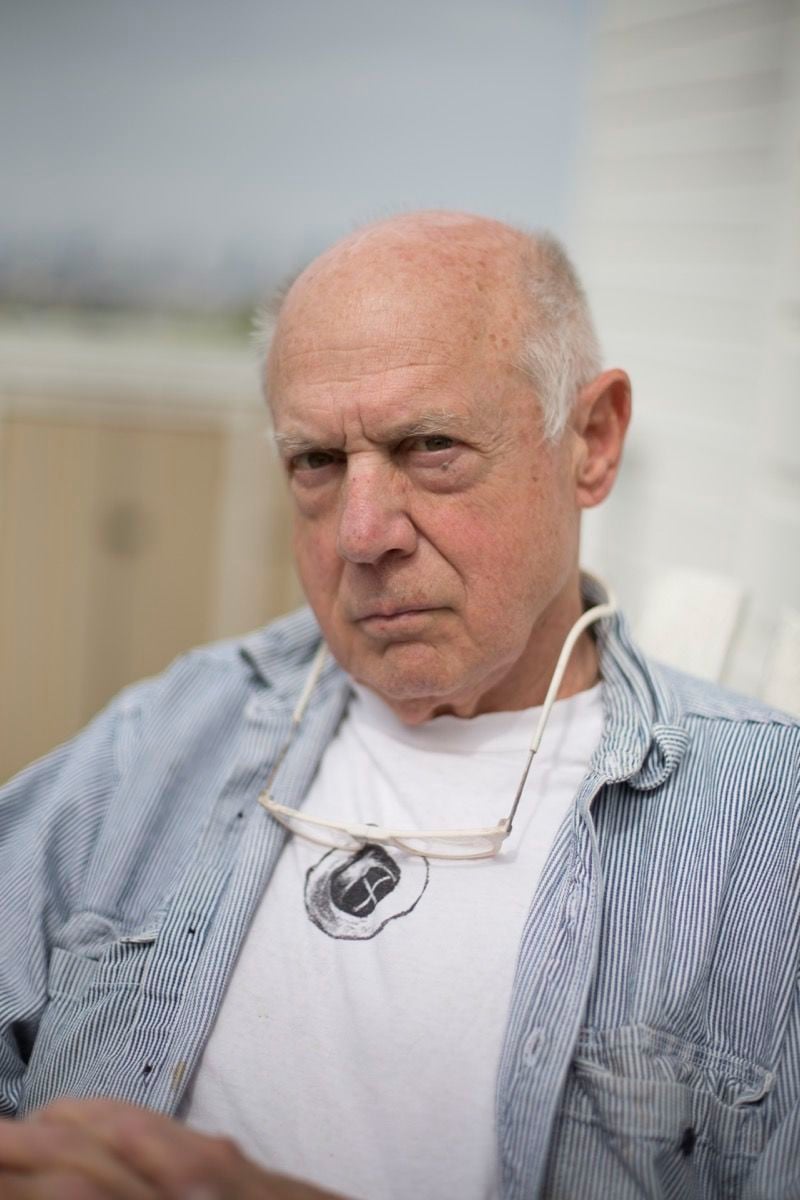
“Diabolically beautiful.” “Ridiculously seductive.” “Subversively beautiful.” Ron Nagle’s tiny, abstract sculptures inspire his fans to reach for their most expressive language to evoke their abundant appeal. (Those are raves, respectively, from Dave Hickey, Ken Johnson, and Apsara DiQuinzio.) His ceramic sculptures, only inches to a side, pack colors and textures into packages that contain visual excitement galore.
“Ron Nagle: Handsome Drifter,” on view at the UC Berkeley Art Museum and Pacific Film Archive, presents work mostly from the new millennium, capping five decades of ceramics that are alluring and repellent, deeply weird, and utterly bewitching. Nagle worked primarily in the medium for decades, after honing his techniques in California in the ‘50s with the legendary Peter Voulkos (one of Nagle’s great inspirations, along with the painter Giorgio Morandi). He started off with shapes that echoed cups—clay’s equivalent the the nude in painting, as Peter Schjeldahl has put it—and vases, but soon moved into abstract forms in tandem with his friend, inspiration, and fellow clay artist, Ken Price.
Ron Nagle, Handsome Drifter (2015). Courtesy of UC Berkeley Art Museum & Pacific Film Archive.
Nagle draws such variety out of his chosen materials, and each small piece is so idiosyncratic, that it’s surprising that he categorizes them into series, with names like “Thin Fins,” “Smoove Wares,” “Snuff Bottles,” and “Stillscapes” (the latter referring to a hybrid of still life and landscape).
Compare Night of the Hunter (1998) with Fortgang (2002), both “Thin Fins.” Both consist of a semicircular, headstone-like shape propped on a little piece of turf, with an elongated, curving shape sitting in front of it; in the former, the sinuous shape is like a cat’s tail, while in the latter, it’s disturbingly fecal. Fortgang’s sunburst-orange and yellow color scheme gives it a radiance completely apart from the Night of the Hunter, with its mellow cobalt blue. The two do share a stucco-like surface, which the artist has sprayed with contrasting colors from opposite directions, creating a captivating 3D effect.
“It’s a cheap trick,” said the artist during a conversation in the gallery, in keeping with his self-effacing manner. “It’s like a fake highlight and a fake shadow. It makes them look more magical…or something.”
Ron Nagle, Night of the Hunter (1998). Courtesy of UC Berkeley Art Museum & Pacific Film Archive.
Despite his brilliance, Nagle long found himself consigned to the margins of the art world, his work classified as craft. Lately, ceramics have come into vogue, with artists like Price, Arlene Schechet, and Betty Woodman getting the spotlight and younger artists like Sterling Ruby and Zachary Leener adopting the medium. Nagle notched a major lifetime achievement when he was included in Massimilano Gioni’s Venice Biennale in 2013. Since then, the blue-chip Matthew Marks Gallery has mounted its own biannual shows of the artist. At the same time, in the last decade or so, Nagle has introduced other materials from the world of craft, like epoxy resin and polyurethane. Nagle seems to be acting out what he calls his “contempt for purity in ceramics”—just as the medium is having its moment in the sun. It’s a characteristically perverse turn.
Nagle has also been a songwriter and musician for as long as he’s been making sculptures; performers like Jefferson Airplane, Sammy Hagar and Barbra Streisand have recorded his compositions. Berlin-based critic Jan Verwoert, in a stunning essay in the BAMPFA exhibition catalogue, draws out the similarities between the two modes of creation; both in song and in sculpture, the artist achieves poetry, flawless structures, and surprise in compact formats. “This is the only guy so far who has been able to kind of creep into my head,” said Nagle, approvingly, of Verwoert’s take on his dual practices. (For anyone seeking the aural equivalent of Nagle’s ceramic inventiveness: His newest release is Introducing…The Many Moods of Ron Nagle, while his 1970 solo album Bad Rice has just been re-released in expanded form by Omnivore Records.)
Ron Nagle, The Bad Clown (2003). Courtesy of UC Berkeley Art Museum & Pacific Film Archive.
When our conversation turns to deeper questions about the drive to create, Nagle quickly says, “The main thing for me is, I love to work. It’s my salvation.” He stopped using drink and drugs decades ago. “After I quit, I said, ‘Okay, man, I gotta do something. I’ve got a chance to do what I want to do.’” He cites Lewis Hyde’s beloved book The Gift: Imagination and the Erotic Life of Property, which everyone from Margaret Atwood to Hans Ulrich Obrist has described as transformative, and which defines artistic ability as a gift that must be repaid.
“Giving back boils down to being inspired by something and believing that when you’re inspired, it’s your responsibility to pay it back to someone,” he said. “It’s a three-party deal. You see it, you do it; you do it, someone else sees it. When you see someone else do it better than you, you decide you want to do it as well as they do.”
As for his own work, he said, his aim sounds simple but, in truth, is anything but.
“The main thing I want is that the work makes people feel something they haven’t felt before,” he said. “And that’s seemed to happen. People at the opening said it felt like wonderland. I like that.”
“Ron Nagle: Handsome Drifter” is on view through June 4, 2020. See more works by the artist below.
Ron Nagle, Sudoku Seppuku (2019). Courtesy of the artist. Courtesy of UC Berkeley Art Museum & Pacific Film Archive.
Ron Nagle, Lotta Wattage (2012). Image courtesy Matthew Marks
Installation view of “Ron Nagle: Handsome Drifter” at BAMPFA. Photo: Johnna Arnold, courtesy of the Berkely Art Museum & Pacific Film Archive.
Ron Nagle, New Collusion (2018). © Ron Nagle. Courtesy the artist and Matthew Marks Gallery.